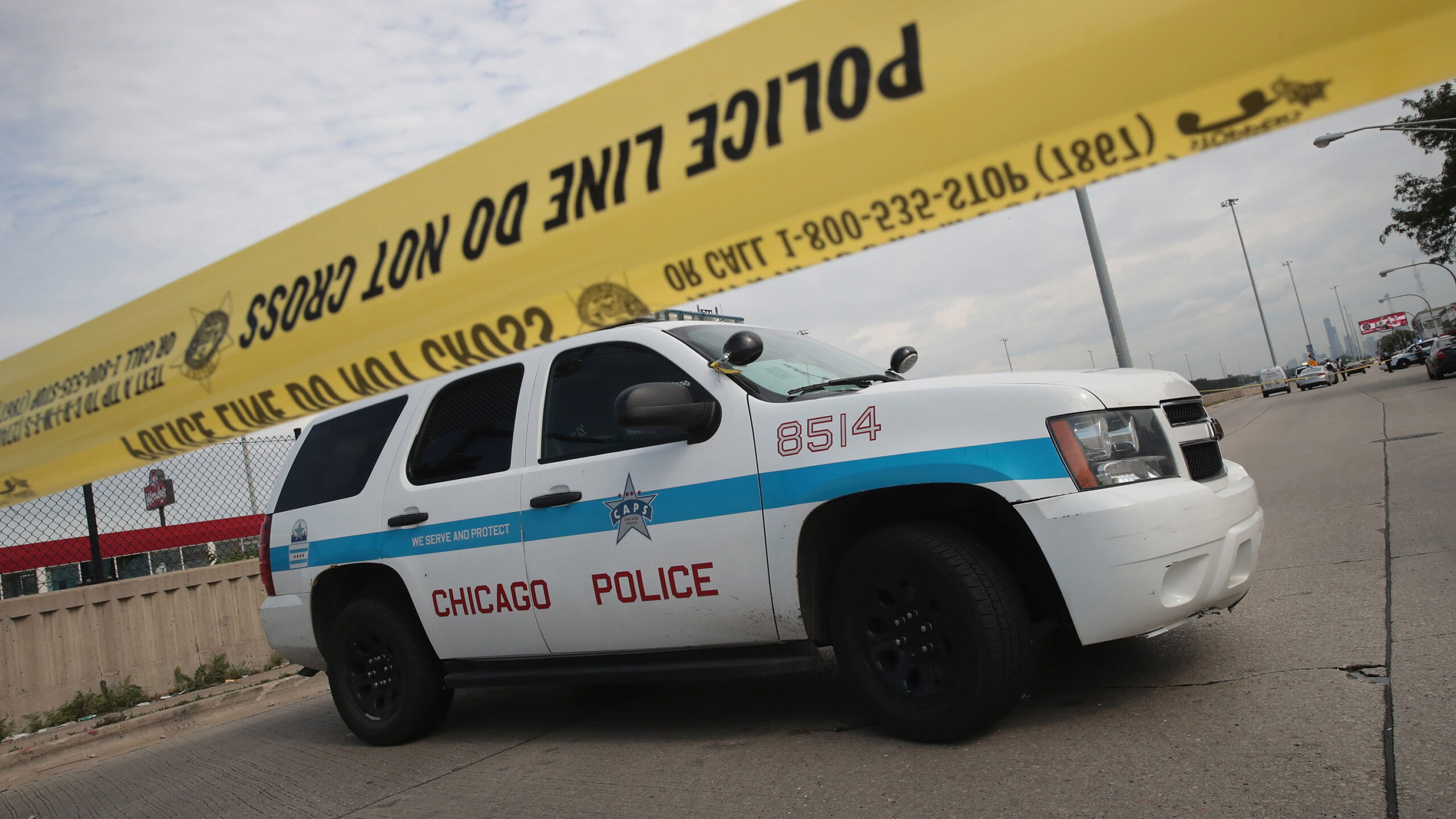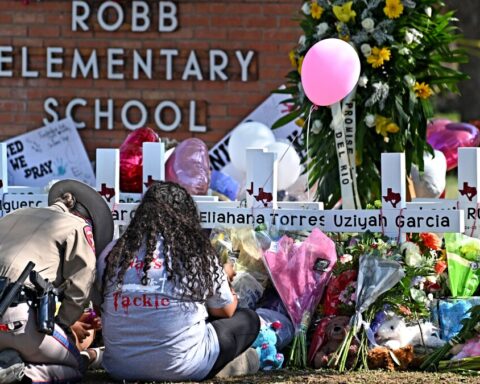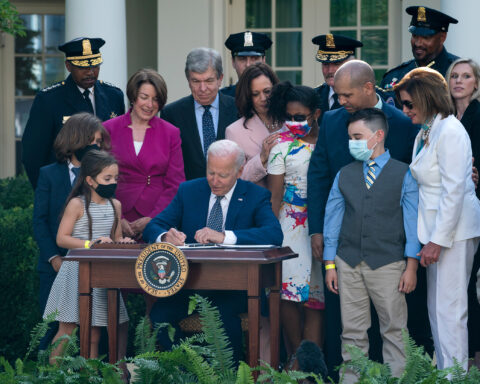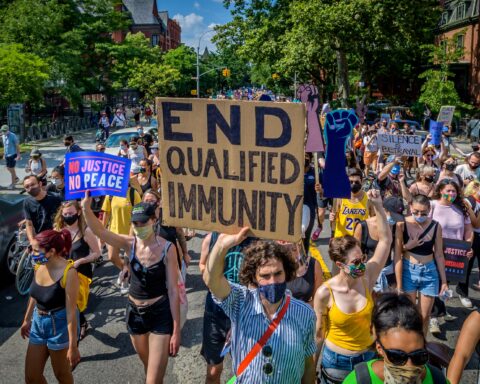At a time of national reckoning and outcry over systemic racism, prominent proposals for addressing police brutality call for law enforcement agencies to more closely reflect the demographics of communities they serve.
Now, one of the first studies of its kind — published Thursday in the journal Science — finds that deploying officers of color as well as female officers could reduce shootings and improve how police treat Black residents.
“In line with the assertions of many social justice advocates, we find that officers of color and female officers are less likely to stop, arrest or use force than their white or male counterparts,” said Jonathan Mummolo, assistant professor of politics and public affairs at Princeton University and one of the authors. “Especially when encountering minority civilians, when working in common circumstances. So diversity in policing yields tangible effects.”
Amid recent calls for sweeping police reform prompted, in part, by last year’s death of George Floyd at the hands of Minneapolis police, the researchers studied years of data gleaned from open records requests that showed race/ethnicity, language skills, daily shift assignments and other information from 7,000 Chicago police officers.
The data was matched to time-stamped, geolocated records that showed arrests, traffic stops and use of force against civilians by those officers from 2012 to 2015.
The study found that Black officers had 29% fewer stops, 21% fewer arrests and 32% fewer instances of use of force per shift than White officers citywide. The findings were similar — though the gaps more modest — for Hispanic and female officers.
“In case it wasn’t already clear to some the events of the past year following the killing of George Floyd have made it undeniable that policing is one of the most pressing political and social issues of our time,” Mummolo said.
“And there are no shortage of proposals for how to change policing. But, as with so many social problems, we are still lagging behind in producing credible evidence on the efficacy of many policies largely because of data constraints. We think our study offers valuable evidence that citizens and policymakers can use as they debate the way forward.”
Chicago police cite ‘ongoing reform efforts’
In a statement, the Chicago Police Department said it is “committed to treating all individuals with dignity and respect.”
“Ensuring that our officers reflect the diversity of Chicago’s communities is critical to public safety and constitutional policing,” the statement said.
“The Department has also expanded community immersion-based training for new recruits to learn more about the communities they serve. Additionally, as part of our ongoing reform efforts, all officers are also required to undergo implicit bias training as part of annual in-service training.”
Chicago’s police department — the third largest in the nation — has changed in recent decades from a mostly White and nearly all male force. Today, half of sworn officers are minorities and more than one-fifth are female, according to the study.
“Chicago is a large and racially diverse metropolis, with roughly half of residents identifying as nonwhite,” the researchers wrote. “Chicago is also heavily segregated, has a history of racial tensions between residents and police, and has come under recent scrutiny for controversial aggressive policing tactics such as ‘stop and frisk.'”
“Stop and frisk is a type of aggressive policing that allows — some say encourages — officers to detain a person on virtually any type of vague suspicion, search that individual without a warrant, and arrest the person if any kind of illegal substance or weapon is found.
The Chicago Police Department came under fire after the 2014 police shooting of 17-year-old Laquan McDonald. Jason Van Dyke, the former Chicago cop who shot McDonald, was convicted of second-degree murder and other charges in 2018 and sentenced to six years and nine months in prison. Three other officers were found not guilty of covering up details in McDonald’s death.
It’s rare for patrol records to be shared openly
The researchers said the study could serve as a template to look at diversity and other issues at departments around the country so long as local and state governments grant access to the available data. The arrest data, for instance, required an appeal to the Illinois Attorney General’s office, which overruled the police department’s initial denial of a FOIA request.
“For too long police agencies have closely guarded the records necessary to properly evaluate their policies,” Mummolo said.
“It took us years to obtain the data needed to properly study a single city. And if this country is serious about addressing inequities in policing that has to change. Social science has well developed tools for deciphering the effects of policy initiatives. But we need the data.”
Throughout the US, some 18,000 police agencies have different record-keeping and disclosure practices. And patrol records have rarely been shared openly, according to the study.
Dean Knox, an assistant professor at the Wharton School of the University of Pennsylvania and study co-author, said shift assignment records could be used to identify “bad apples” among officers.
Co-author Bocar Ba, an assistant professor of economics at the University of California, Irvine, said the data did not enable the researchers to attribute to bias the differences in police behavior. Racial bias could be a factor but further study with additional data is needed to fully explain the differences.
The researchers have set their sights on studying the growing use of body worn cameras by police — which, they said, do not appear to change police behavior. Still, the thousands of hours worth of unexamined body cam footage could provide valuable insight into policing.
“When it comes to changing policing, we need to know what works and what doesn’t,” Mummolo said. “The data are just sitting there, but very few people can reach it. This issue is too important to be flying blind.”




